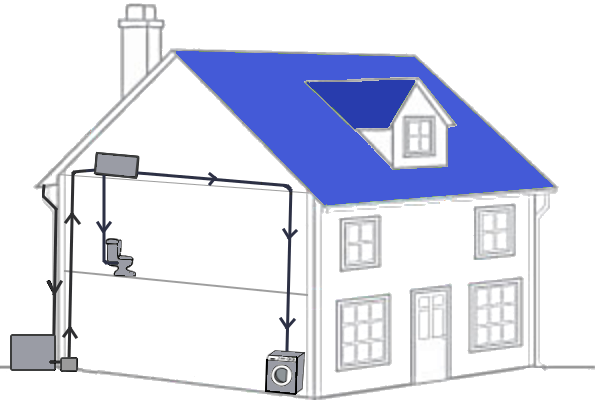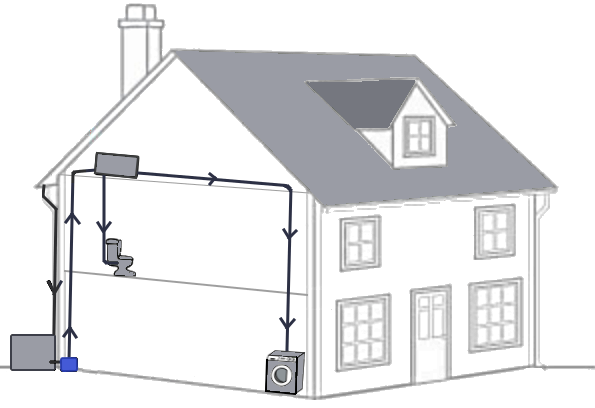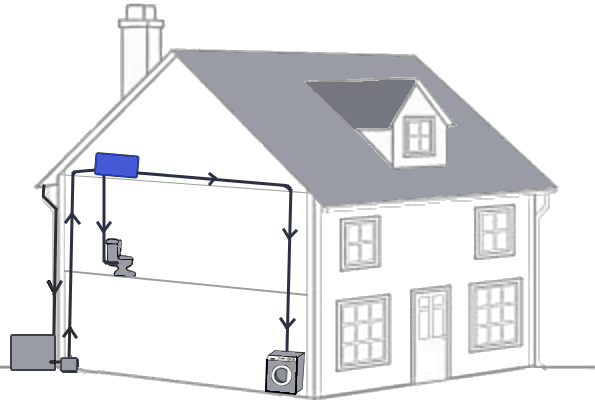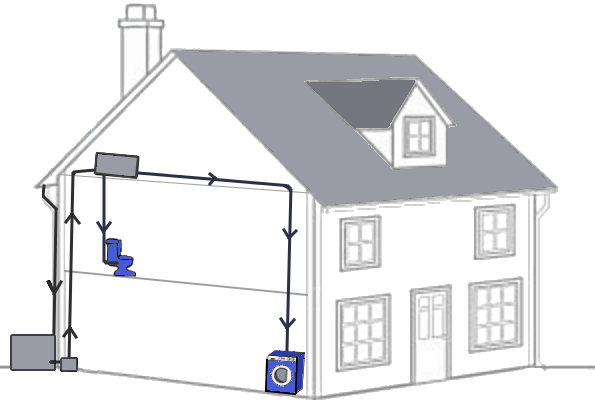Design of rainwater harvesting systems
Rainwater harvesting is a simple technology but requires some thought to ensure that the system works as effectively as possible.
This section provides details on the key elements of a harvesting system.

The first part of a rainwater harvesting system is having a roof space from which to capture the rainwater as it falls. The larger the area, the more water can be harvested.
Having a large roof area is good, but the water needs to be collected in a single place. Rain water usually drains into guttering where it is directed into the waste water/sewage systems. Rainwater harvesting works by diverting the water from a gutter into a reservoir where it can then be stored. Therefore any existing gutters should be considered when designing a system.

This is the storage tanks for holding the rainwater. This could be a 100 litre water butt, or a 1000 litre water tower - ultimately, it stores water ready for your use. The more water you want to use, the larger the tank will need to be.
The amount of water that can be harvested is dependant on the likely amount of rainfall. This varies throughout the country (Rainfall chart). It is therefore necessary to choose a reservoir that stores enough for your needs and can sustain any dry periods.
A larger tank is better because it provides greater storage and more resilience to drought, but this will take up more space and be quite heavy (hence why only a smaller header tank is in the loft). When considering a system, how much room do you have for a reservoir? If you have a garden, you could bury it underground, but this can mean lots of labourious digging.
Use our handy tank size calculator to help estimate your required volume : Storage tank calculator

Large volumes of water are heavy so the reservoir is located on the ground, but the header tank needs to be high up to allow gravity to pull the water to where it's needed. To achieve this a pump is required that will move water from the reservoir to the header tank, but this needs to be controlled so that it only pumps water when the header tank is not full.
The pump needs to be immersed in the reservoir and also requires a connection to mains electricity so also consider this when locating your reservoir, and also consider whether you have a plug socket you can dedicate to this purpose.

The header tank is a store of water situated higher than the outputs. This means that gravity can be used to flow the water to where required and provide some pressure.
Usually the tank will be in the loft/attic space and water will be pumped up to it from the reservoir. This is because large volumes water can become heavy (1 litre water = 1 kilogram) so the bulk of the weight is held on the ground and only a smaller tank within the roof.

This is needed to connect all the pieces together. The reservoir to the header and then from the header to the outputs.
The pipework will usually be a mixture of copper and plastic. This is because plastic is cheaper and easier to manipulate in loft spaces, but copper can then be used to produce neat, straight runs.
Most pipework is hidden wherever possible. For example, the pipework from the reservoir to the header can often be hidden within a gutter and downpipe so is not visible.

Harvested rainwater is suitable for a mixture of uses. Most commonly, these are toilets, washing machines, internal taps, and external/garden taps.
- Toilets are incredibly wasteful of water so replacing them with rain water has a very dramatic impact in mains water usage. It is not permitted for rainwater to come into contact with the mains, so an air gap is required.
- Washing machines can also use rainwater, but if the machine has two feeds (separate hot and cold), then only the cold feed is to be supplied with rain water.
- Indoor taps could be fitted near to the sink, or ideally in a utility area to provide a source of water for internal washing or rinsing. For example, why use clean drinking water for mopping a floor, when rain water is just as suitable.
- Outdoor taps are often the easiest usage of rain water as there may be no pipework (a tap could be fitted directly to the reservoir).